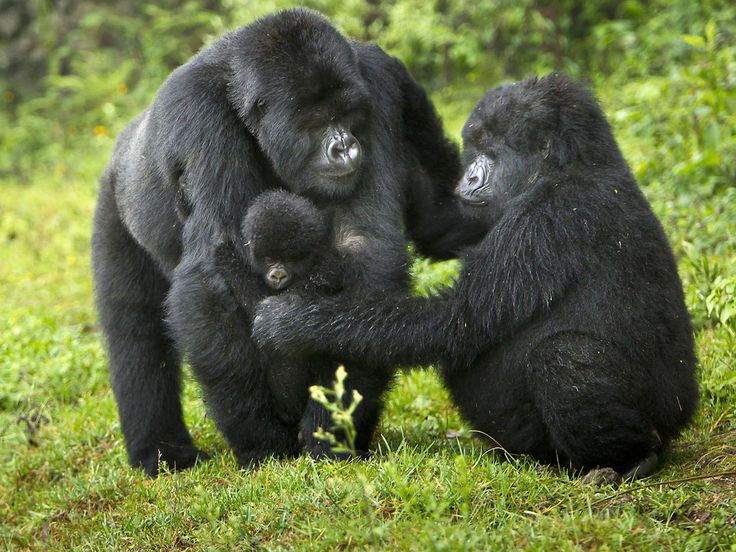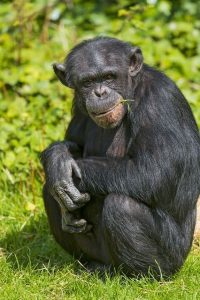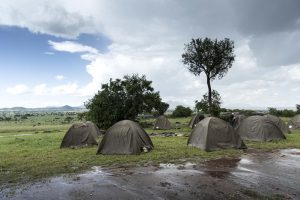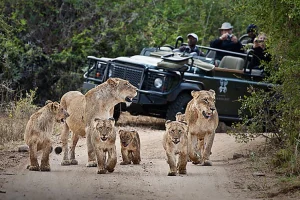Uganda is one of the few places on Earth where you can witness endangered mountain gorillas in their natural habitat. These majestic primates, known for their intelligence, strength, and close-knit social structures, live deep in Uganda’s tropical rainforests. Over the years, conservation efforts have steadily increased their numbers, making Uganda a critical stronghold for gorilla survival. But exactly how many gorillas live in Uganda today?
In this comprehensive guide, we explore the latest population statistics, the places you can find gorillas in Uganda, the efforts that have gone into protecting them, and what you can do to experience gorilla trekking responsibly.
Where Can You Find Gorillas in Uganda?
Uganda is home to two protected national parks where mountain gorillas live:
Both parks are located in the southwestern part of the country and form part of the larger Virunga Conservation Region, which extends into Rwanda and the Democratic Republic of Congo. Bwindi, in particular, is world-renowned for harboring almost half of the world’s mountain gorilla population.
What Is the Latest Gorilla Population in Uganda?
According to the most recent gorilla census, Uganda is home to over 500 individual mountain gorillas, with approximately 459 found in Bwindi Impenetrable National Park alone. This data came from a joint survey conducted by conservation organizations and government wildlife authorities.
Globally, mountain gorilla numbers are estimated to be just over 1,060 individuals. That means Uganda hosts nearly half of the world’s remaining population, making it a crucial country in global conservation efforts.
What Types of Gorillas Live in Uganda?
Uganda is home to only one type of gorilla: the mountain gorilla (Gorilla beringei beringei). These gorillas are a subspecies of the eastern gorilla and are known for their thick fur, which helps them survive in the cold, high-altitude forests of Bwindi and the Virunga Mountains.
Mountain gorillas are not kept in captivity and are found only in the wild within Uganda, Rwanda, and the DRC. Unlike their lowland cousins, mountain gorillas have adapted to rugged terrain and dense jungle, making sightings in Uganda both wild and authentic.
How Are Gorillas Counted in Uganda?
Gorilla populations are measured using a technique called the “genetic census” or “sweep method.” This involves teams of researchers and trackers combing through forests, collecting fecal samples and analyzing DNA. They also track gorilla nests, footprints, and feeding signs to ensure accurate identification of individual gorillas and families.
This modern approach reduces double-counting and provides reliable data for conservation planning. It also helps monitor the health and stability of gorilla populations across protected regions.
What Is Gorilla Trekking and Why Is It Important?
Gorilla trekking involves hiking into the forest to observe a habituated gorilla family for up to one hour. It’s one of the most sought-after wildlife experiences in Africa and plays a pivotal role in gorilla conservation.
Revenue generated from gorilla permits funds ranger patrols, anti-poaching operations, and community development. By engaging in gorilla trekking, tourists directly contribute to the survival of the species and the well-being of local communities.
How Has Conservation Helped Increase Gorilla Numbers in Uganda?
Back in the 1980s, mountain gorilla numbers had plummeted due to poaching, habitat loss, and civil unrest. However, Uganda has since become a model of successful conservation through:
- Strict protection laws enforced by the Uganda Wildlife Authority (UWA)
- Community-based tourism that shares revenues with local residents
- Health monitoring programs run by Gorilla Doctors
- Habituation programs that enable safe human-gorilla interaction
These combined efforts have reversed the species’ decline and led to a steady increase in population numbers over the last two decades.
What Threats Do Gorillas Face in Uganda Today?
Despite recent successes, mountain gorillas remain critically endangered due to ongoing threats such as:
- Habitat encroachment from farming and human settlement
- Poaching, although rare, still occurs
- Disease transmission, particularly from humans during treks
- Climate change, which can disrupt food availability and nesting areas
Conservation programs continue to work against these threats through education, regulation, and responsible tourism.
Can Tourists Visit Gorilla Habitats in Uganda Safely?
Yes, visiting Uganda for a gorilla trekking safari is safe, both for tourists and the gorillas. The Uganda Wildlife Authority has established strict guidelines that include:
- Group sizes limited to 8 visitors per gorilla family per day
- Minimum age requirement of 15 years
- Mandatory face masks during treks to prevent disease transmission
- Trained rangers and guides accompanying all treks
These safety measures help ensure that both gorillas and humans remain unharmed and that the natural habitat is preserved.
What Is the Best Time to Visit Gorillas in Uganda?
Gorilla trekking can be done year-round, but the best times to visit are during Uganda’s dry seasons:
- June to September
- December to February
During these months, trails are more accessible, and trekking is easier due to less rainfall. The wet seasons (March to May and October to November) are less crowded and offer lush scenery but can make trekking more physically demanding due to muddy conditions.
What Should You Pack for a Gorilla Trek in Uganda?
To fully enjoy your gorilla trekking experience, bring the following items:
- Comfortable hiking boots
- Long-sleeved shirt and trousers
- Lightweight rain jacket
- Insect repellent
- Reusable water bottle
- Camera (no flash photography)
- A walking stick (often provided by guides)
Packing appropriately enhances your comfort and ensures you are prepared for changing weather conditions.
Why Is Uganda One of the Best Places in the World to See Gorillas?
Uganda offers a combination of affordability, accessibility, and authentic wilderness that few other destinations can match. Gorilla permits in Uganda cost significantly less than in Rwanda, and the experience is often considered more adventurous due to the terrain and density of the forest.
Moreover, Uganda is the only country that offers both gorilla trekking and gorilla habituation experiences, where visitors can spend up to four hours with a gorilla family as they get used to human presence. This makes Uganda an unmatched destination for immersive primate encounters.
Conclusion
So, how many gorillas are in Uganda? Over 500 mountain gorillas, representing nearly half of the world’s remaining population, live within the borders of this East African nation. Thanks to robust conservation efforts and community support, these endangered primates are not just surviving—but gradually thriving.
Uganda offers a rare chance to see mountain gorillas up close in one of the most biodiverse environments on the planet. By participating in gorilla trekking, travelers don’t just get to witness this awe-inspiring species they also become part of a global movement to protect them.
If you’re planning a wildlife safari or an unforgettable primate experience, Uganda stands as one of the top destinations in the world. With the right preparation and ethical travel choices, your visit can support conservation and provide memories that last a lifetime.




